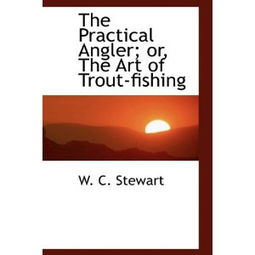Content:
Winter fishing can be a serene and rewarding experience, offering anglers the chance to enjoy the tranquility of nature while reeling in some impressive catches. However, the cold weather presents unique challenges, particularly when it comes to tuning your bait. Here, we delve into the essential tips for mastering the art of winter fishing and perfecting the technique of tuning your bait.
Understanding Winter Conditions
Before we dive into the specifics of tuning your bait, it's crucial to understand the conditions that winter fishing presents. Water temperatures drop significantly, which affects fish behavior and the way they interact with bait. Fish become more lethargic and are less likely to move around, making it essential to present your bait in a way that triggers their interest.
Choosing the Right Equipment
The first step in winter fishing is selecting the right equipment. Here are some key pieces of gear to consider:
Fishing Rod and Reel: Opt for a lightweight, sensitive rod that can detect even the slightest bite. A spinning reel is often preferred for winter fishing due to its ease of use and the ability to handle lighter lines.
Line: Use a monofilament line with a lower breaking strain, typically around 4-6 pounds. This allows for more sensitivity and reduces the risk of breaking off during a tough fight.
Lures and Baits: Winter fish are less active, so you'll want to use baits that mimic natural prey and are less likely to spook them. Live bait like worms or minnows can be effective, as can soft plastics or jigs that resemble small fish or insects.
Tuning Your Bait: The Basics
Now that you have the right equipment, it's time to focus on tuning your bait. Here are some essential steps to follow:
Leader Length: In winter, a shorter leader length (usually around 12-18 inches) can be more effective. This reduces the distance between the bait and the hook, allowing for more precise control and reducing the risk of the bait being pulled away from the fish.
Hook Size: Use a hook that is appropriate for the bait and the size of the fish you're targeting. A smaller hook is often better in winter, as it's less likely to spook fish and can more effectively hold onto smaller prey.
Bait Presentation: The key to success in winter is to present your bait in a way that mimics natural movement. This can be achieved by:
Twitching: Gently twitch your bait to mimic the natural movement of prey. This can be done by lifting the rod tip slightly and then letting it fall back.
Wobbling: Use a slow, wobbly motion with soft plastics or jigs to attract fish. This can be particularly effective when fish are less active.
Steady Motion: Sometimes, a slow, steady retrieve can be more effective than erratic movements. This allows the fish to track the bait more easily.

Adjusting the Bait: Pay attention to how your bait behaves in the water. If it's too heavy or too light, it may not reach the desired depth or may not move naturally. Adjust the weight of your bait or the position of the weight on your line to achieve the desired action.
Tuning the Bait for Specific Conditions
Winter fishing conditions can vary greatly, so it's important to adapt your tuning technique accordingly:
Cold Water: In very cold water, fish are less likely to move, so a slower, more deliberate approach with your bait is often necessary.
Wind: Wind can make it difficult to maintain a steady bait presentation. Use a heavier bait or add weight to your line to keep your bait down and reduce the impact of the wind.
Snow and Ice: If you're fishing in areas with snow or ice, be prepared for changing conditions. Keep an eye on the weather forecast and be ready to adjust your technique as needed.
Final Tips
Patience: Winter fishing requires patience. Fish may be slow to bite, so be prepared to wait for longer periods between catches.
Layered Clothing: Dress in layers to stay warm. The ability to adjust your clothing as needed is crucial for comfort and effectiveness on the water.
Safety First: Always prioritize safety, especially when fishing in cold weather. Be aware of ice conditions if you're fishing on a frozen lake, and never fish alone.
By mastering the art of tuning your bait in winter, you'll be well on your way to enjoying successful winter fishing trips. Remember to adapt your technique to the specific conditions you're facing, and most importantly, have fun and enjoy the beauty of winter fishing.












